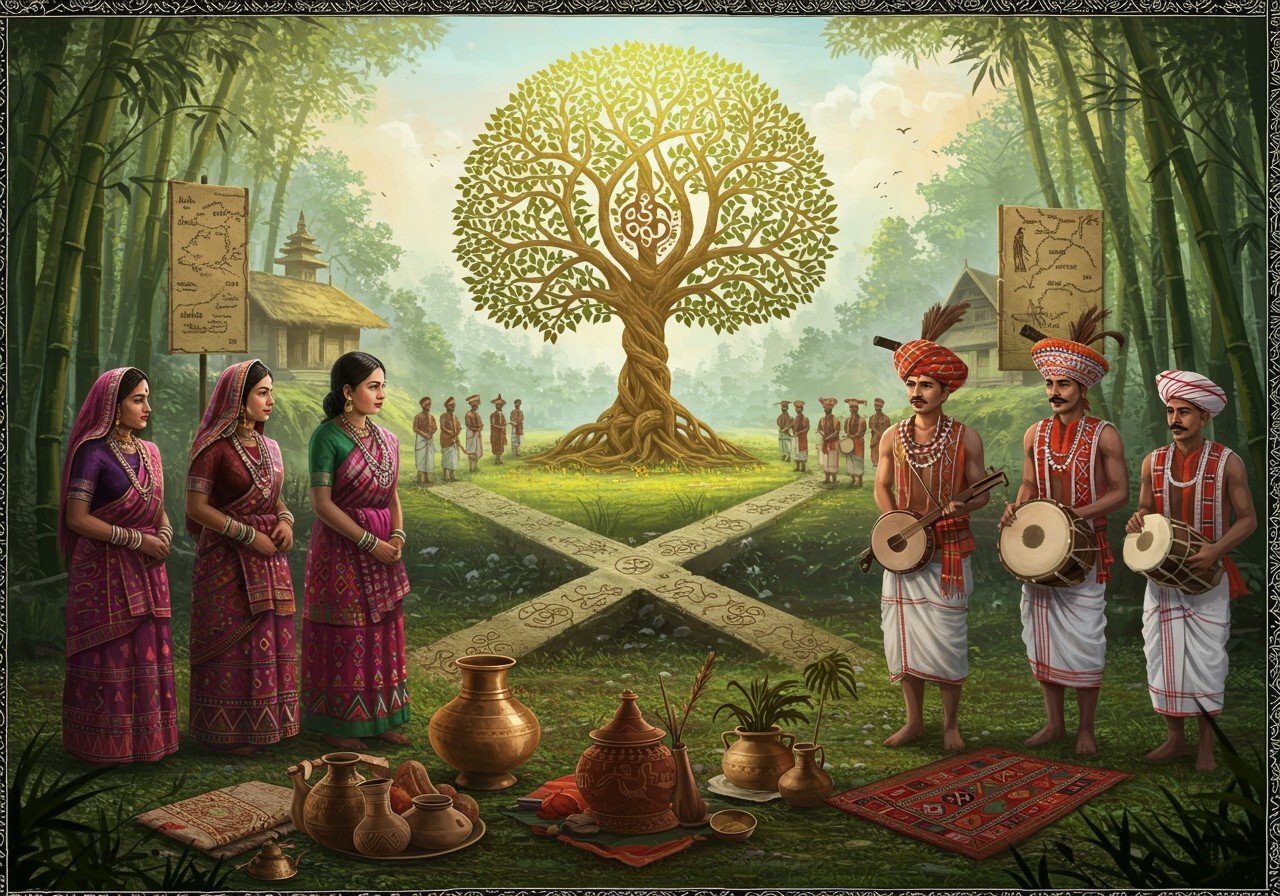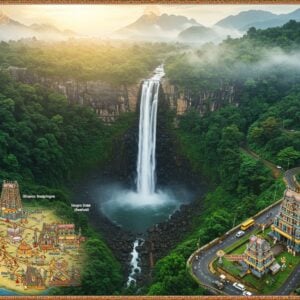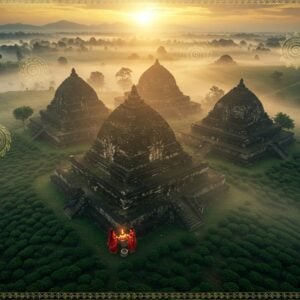
The Bodo-Kachari connection unveils a captivating narrative woven into the rich tapestry of India’s northeastern heritage. This ethnolinguistic group, primarily residing in Assam, Tripura, Meghalaya, and West Bengal, carries a legacy that whispers tales of ancient migrations and enduring traditions. Believed to have journeyed from Tibet through the Bhutan passes between 3,000 and 5,000 years ago, they stand as a testament to the enduring human spirit. Known as ‘Mech’ or ‘Meche’ in West Bengal and Nepal, their story is an integral part of India’s vibrant cultural mosaic.
A Glimpse into Bodo-Kachari History
-
Early Settlers: The Bodo-Kacharis are considered among the earliest inhabitants of the Brahmaputra valley. The very names of many rivers in the region, with “Di/Doi” meaning water in Boro-Garo languages, echo their ancient presence. This deep connection to the land speaks volumes about their history.
-
Origins and Migrations: Their journey is thought to have originated from the north or east. Phylogenetic studies trace their language back to Proto-Tibeto-Burman roots in Northern China, near the Yellow River, painting a picture of an epic migration over millennia.
-
Historical Mentions: The term “Kachari” surfaces in the 16th-century Assamese language Bhagavata, often used interchangeably with “Kirata.” Buranjis (historical chronicles) and colonial documents further identify Boro-Garo speakers from the plains as Kachari, solidifying their place in recorded history.
-
Early Kingdoms and Dynasties: The Bodo-Kachari legacy includes the establishment of significant early states in the late Medieval era. These include the Chutia Kingdom, Dimasa Kingdom, Koch dynasty, and Twipra Kingdom, each contributing to the intricate political landscape of the time.
-
The British Period and Linguistic Classification: The term “Bodo” itself entered common usage in 1847, thanks to Hodgson’s work referencing the Mech and Kachari peoples. Later, Grierson further cemented its use, employing “Bodo” to denote a specific branch of the Tibeto-Burman language family. This period marked a shift in how these communities were identified and categorized.
The Heart of Bodo-Kachari Culture
-
Language: The Bodo language, a member of the Bodo-Garo branch of the Tibeto-Burman family, is officially recognized in the Indian Constitution. Over time, they have employed Roman and Assamese scripts, and currently use Devanagari, demonstrating adaptability while preserving their linguistic heritage.
-
Agriculture and Lifestyle: Agriculture, especially paddy cultivation, forms the cornerstone of Bodo-Kachari life. Their expertise in rice cultivation and early adoption of silkworm rearing highlight their deep connection with the land and their innovative spirit.
-
Bathouism: The Spiritual Core: Traditionally, the Bodo-Kachari people practice Bathouism, their unique ethnic religion. “Bathou” embodies five fundamental principles: Ha (earth), Dwi (water), Bar (wind), Orr (fire), and Okrang (universe), representing the core sources of energy in their belief system. They revere a supreme God, Bwrai Bathou, alongside deities like Mainao, Mairong, Aileng, and Agrang. The Shijou tree holds a sacred place as a symbol of Bathouism.
-
Society, Traditions, and Art: The Bodo people express their vibrant culture through dance, song, and intricate weaving. Women skillfully create their own Dokhnas (traditional dress) and shawls, keeping alive the art of weaving. Their craftsmanship extends to bamboo products, showcasing their resourcefulness. Zu Mai (rice wine) is their traditional drink, and rice, often accompanied by non-vegetarian dishes, forms the staple of their cuisine. You can find beautiful handcrafted wooden masks and other decorative items that reflect the richness of Bodo-Kachari art on Poojn.in.
-
Costumes and Weaving: Shawls hold a prominent place in Bodo fashion, reflecting their artistic sensibility. The presence of looms in Bodo households underscores the importance of weaving as a cultural practice passed down through generations.
Honoring the Bodo-Kachari Heritage Today
In the face of modernization, preserving the Bodo-Kachari heritage is of paramount importance. Local and governmental organizations strive to promote their languages, arts, and crafts. This preservation strengthens community identity and fosters resilience. Education and technology empower the youth, nurturing cultural pride. Tourism and cultural exchanges offer avenues for global recognition of the Bodo-Kachari heritage.
Poojn.in: Supporting Bodo-Kachari Traditions
Poojn.in is proud to support the rich cultural practices of the Bodo-Kachari community. We offer a wide selection of traditional puja items, including dhotis, sarees, brass utensils, and more, making it convenient for families to honor their traditions.
Celebrating the Bodo-Kachari Legacy
The Bodo-Kachari story is a vibrant thread in the diverse fabric of India. Their resilience, rich traditions, and enduring spirit inspire us all. By understanding and celebrating their heritage, we contribute to a richer, more inclusive narrative of our nation’s identity.
Explore more about the cultural richness of Himachal Pradesh: Manali Culture Beyond Temples and Himachal Pradesh Temples.


